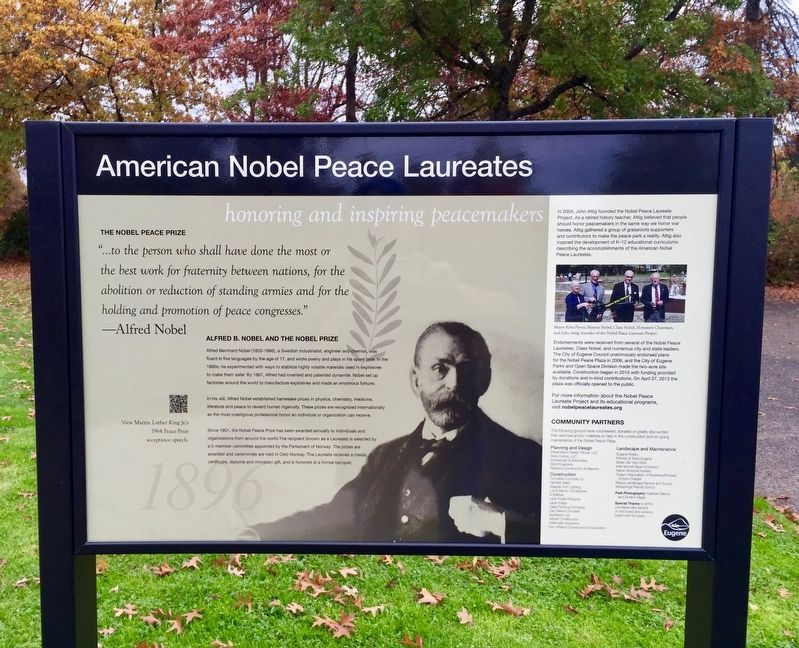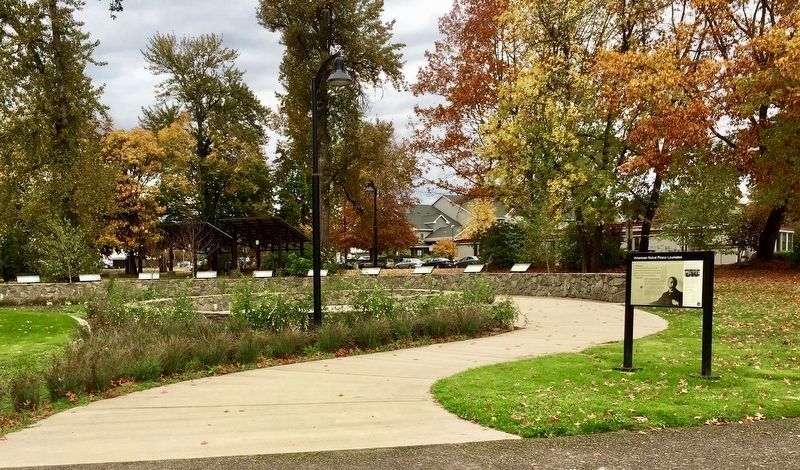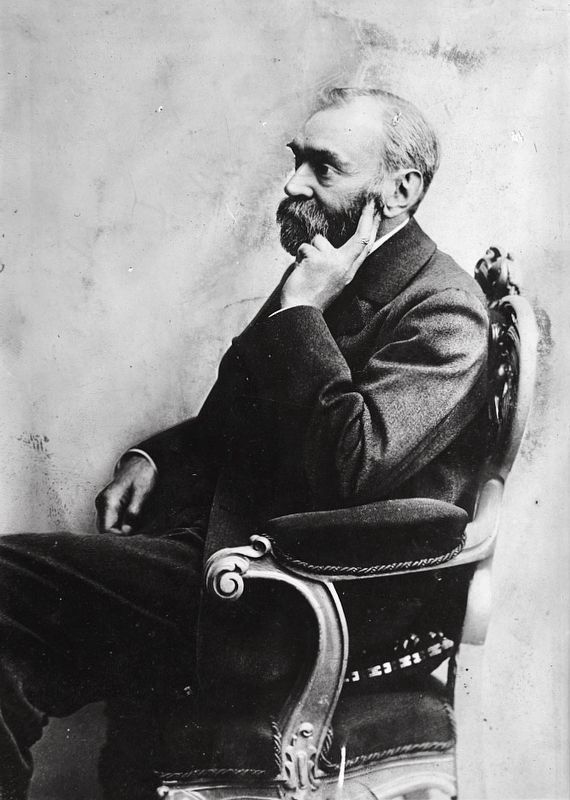American Nobel Peace Laureates
Honoring and Inspiring Peacemakers
The Nobel Peace Prize
"...to the person who shall have done the most or
the best work for fraternity between nations, for the
abolition or reduction of standing armies and for the
holding and promotion of peace congresses.
-Alfred Nobel
Alfred B. Nobel and the Nobel Peace Prize
Alfred Bernhard Nobel (1833-1896), a Swedish industrialist, engineer and chemist, was fluent in five languages by the age of 17, and wrote poetry and plays in his spare time. In the 1860s, he experimented with ways to stabilize highly volatile materials used in explosives to make them safer. By 1867, Alfred had invented and patented dynamite. Nobel set up factories around the world to manufacture explosives and made an enormous fortune.
In his will, Alfred Nobel established namesake prizes in physics, chemistry, medicine, literature and peace to reward human ingenuity. These prizes are recognized internationally as the most prestigious professional honor an individual or organization can receive.
Since 1901, the Nobel Peace Prize has been awarded annually to individuals and organizations from around the world.The recipient (known as a Laureate) is selected by acceptance speech. a 5-member committee appointed by the Parliament of Norway. The prizes are awarded and ceremonies are held
in Oslo Norway. The Laureate receives a medal, certificate, diploma and monetary gift, and is honored at a formal banquet.(Sidebar:)
In 2004, John Attig founded the Nobel Peace Laureate Project. As a retired history teacher, Attig believed that people should honor peacemakers in the same way we honor war heroes. Attig gathered a group of grassroots supporters and contributors to make the peace park a reality. Attig also inspired the development of K-12 educational curriculums describing the accomplishments of the American Nobel Peace Laureates.
Endorsements were received from several of the Nobel Peace Laureates, Claes Nobel, and numerous city and state leaders. The City of Eugene Council unanimously endorsed plans for the Nobel Peace Plaza in 2006, and the City of Eugene Parks and Open Space Division made the two-acre site available. Construction began in 2010 with funding provided by donations and in-kind contributions. On April 27, 2013 the plaza was officially opened to the public.
For more information about the Nobel Peace
Laureate Project and its educational programs,
visit nobelpeacelaureates.org
Erected 2013 by Nobel Peace Laureate Project.
Topics. This historical marker is listed in these topic lists: Charity & Public Work • Peace. A significant historical date for this entry is October 21, 1833.
Location.
Other nearby markers. At least 8 other markers are within walking distance of this marker. Theodore Roosevelt (1906) (a few steps from this marker); American Friends Service Committee (1947) (a few steps from this marker); Emily Balch (1946) (a few steps from this marker); Jody Williams (1997) (a few steps from this marker); The International Campaign to Ban Landmines (1997) (within shouting distance of this marker); Martin Luther King, Jr. (1964) (within shouting distance of this marker); Cordell Hull (1945) (within shouting distance of this marker); International Physicians for the Prevention of Nuclear War (1985) (within shouting distance of this marker). Touch for a list and map of all markers in Eugene.
More about this marker. The marker is located within the Nobel Peace Park, which is situated within Alton Baker Park, between the Defazio Bridge and Day Island Road.
Also see . . .
1. The Peace Park (Nobel Peace Laureate Project). (Submitted on October 6, 2020.)
2. Nobel Peace Laureate Project (YouTube, 8 min.). (Submitted on October 6, 2020.)
3. Alfred Nobel (Wikipedia). "Alfred Bernhard Nobel (21
Credits. This page was last revised on October 7, 2020. It was originally submitted on October 6, 2020, by Andrew Ruppenstein of Lamorinda, California. This page has been viewed 124 times since then and 9 times this year. Photos: 1, 2, 3. submitted on October 6, 2020, by Andrew Ruppenstein of Lamorinda, California.


